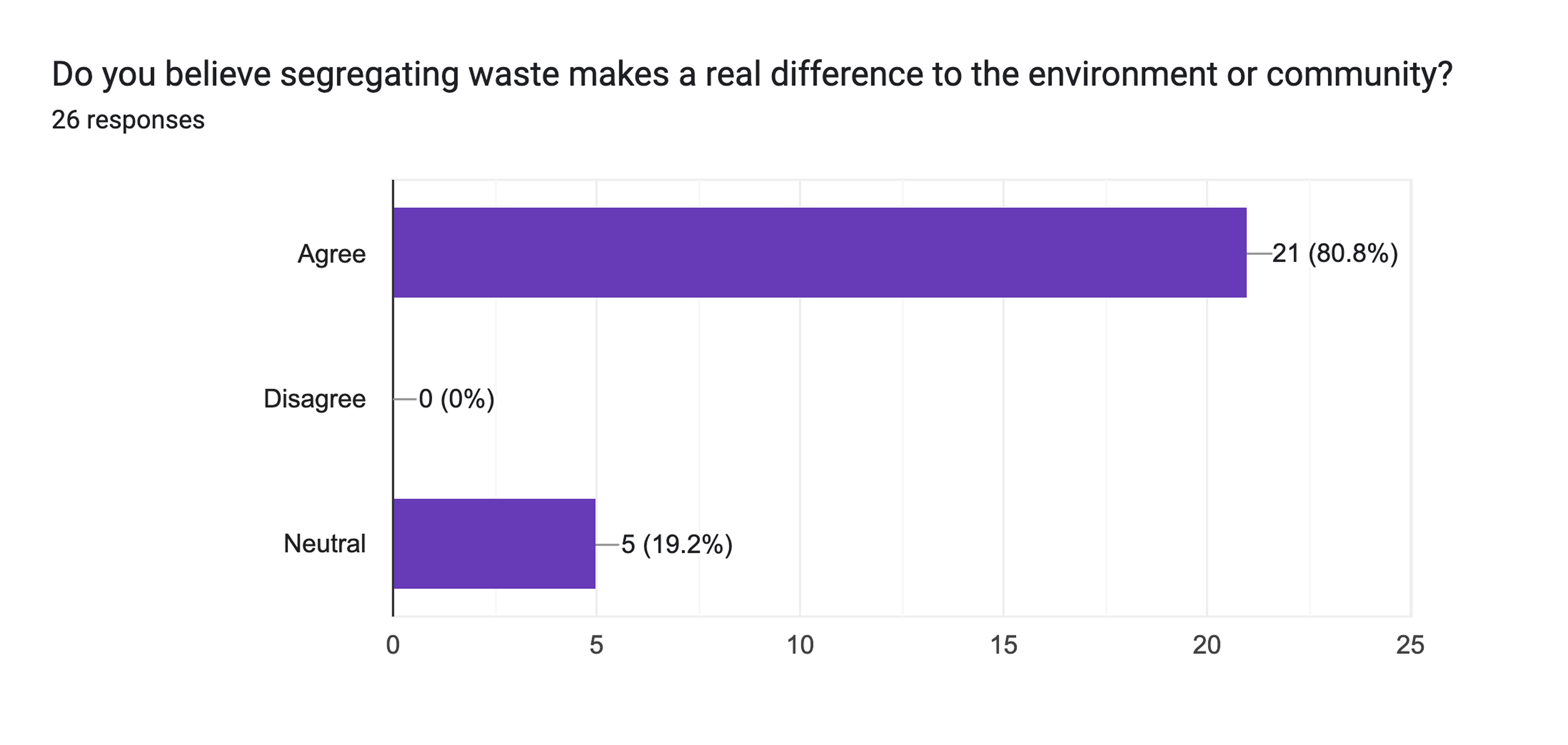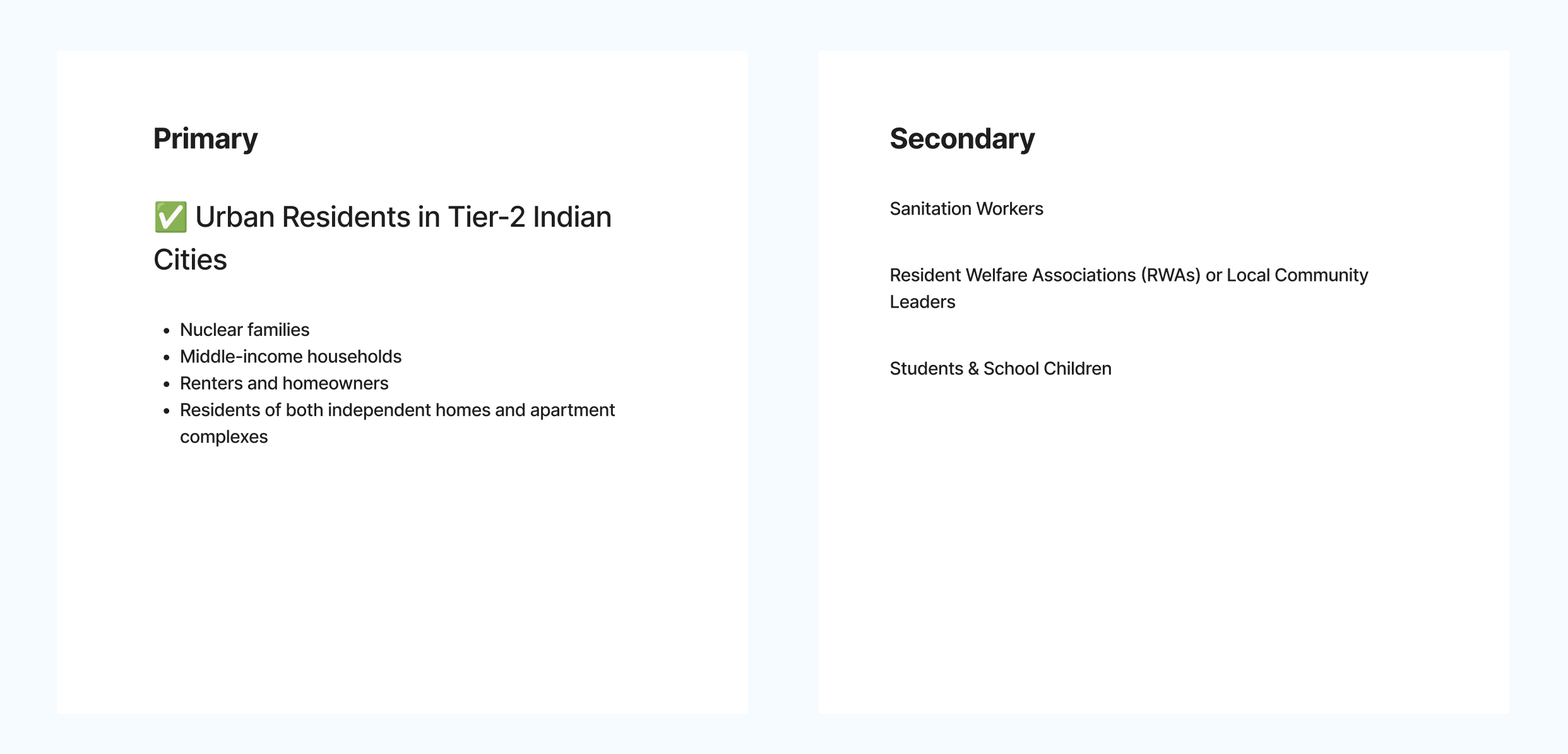BinBuddy
The Problem
Residents in smaller Indian cities typically practice basic waste segregation only when externally enforced, with low awareness of recycling, littering impacts, and proper disposal of complex waste types. A solution is needed to drive informed, community-supported, and intrinsically motivated waste management behaviors.
Design Process
Spotted a Real-World Gap i.e improper waste segregation, design felt like a potential solution to this

Researched Modelsconducted surveys, interviews, mapped insights for the solution from these

Mapped a solution combining physical and digital interventions grounded in the Fogg Behavior Model.

Designed & Prototyped the BinBuddy App, posters, badges, 3D Mockups of Bins, building a cohesive, behavior-driven service.

Research
I conducted in-depth interviews with: Local residents across age groups and occupations, Municipal workers and waste pickers, Household helpers and informal recyclers.
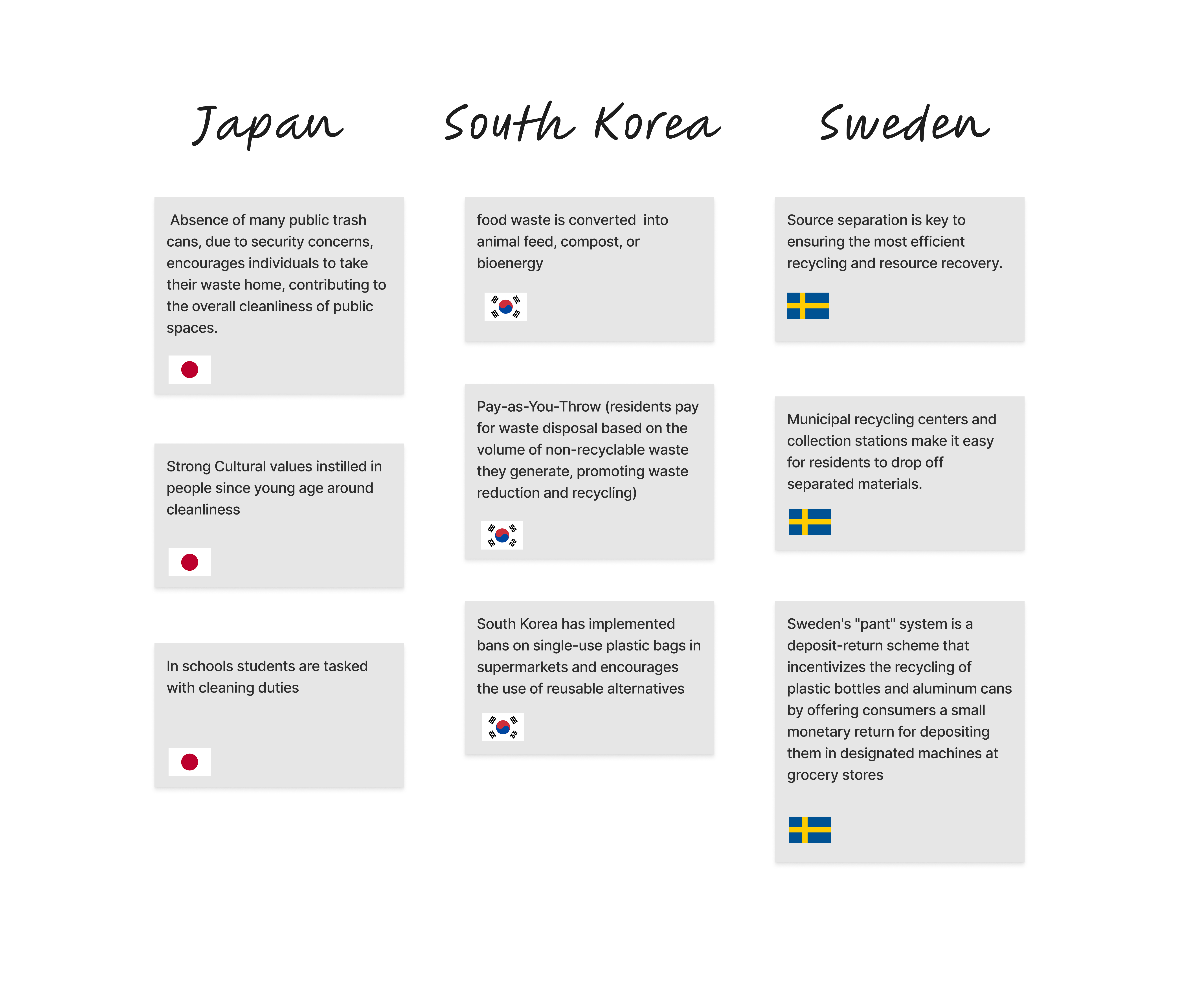
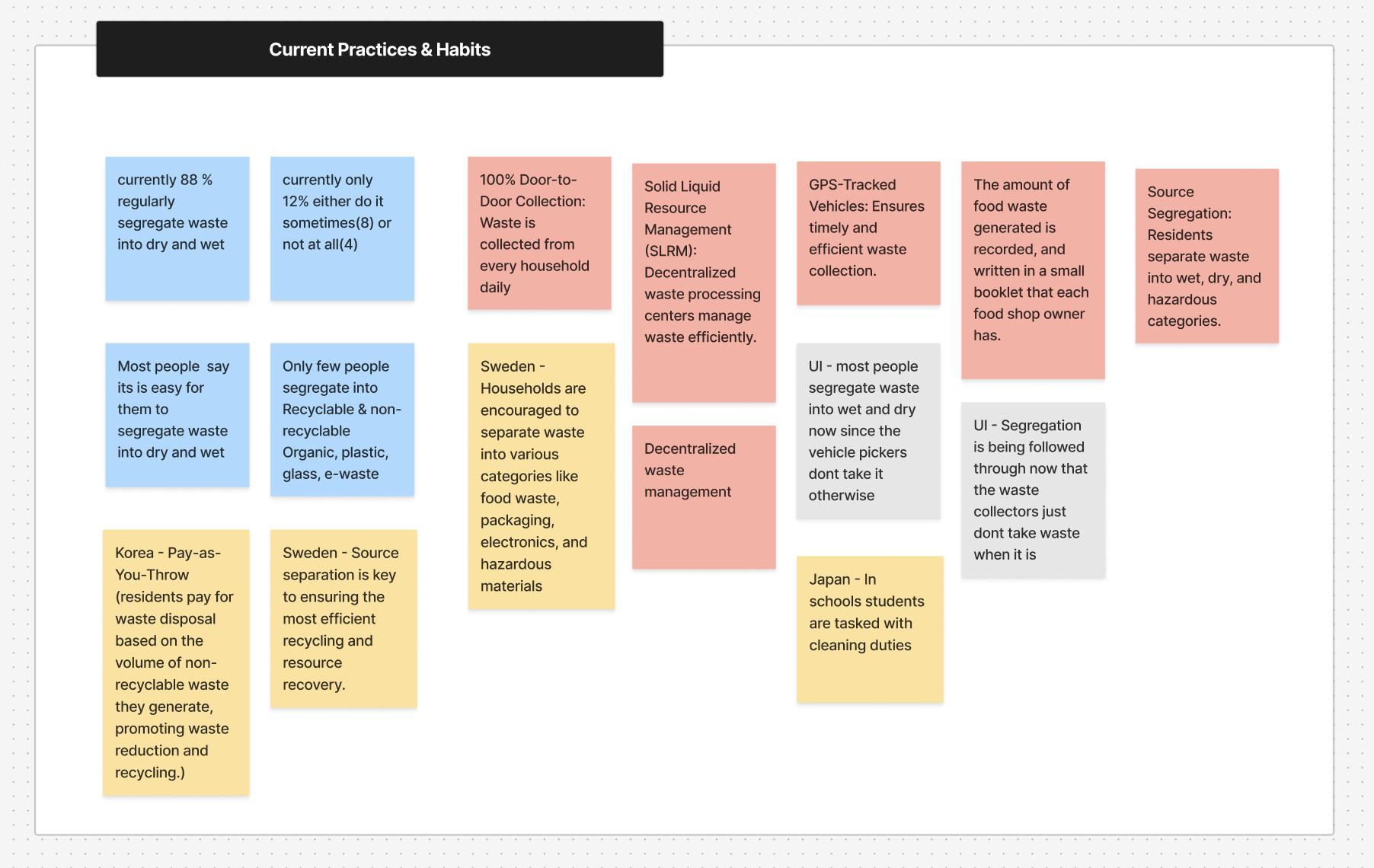
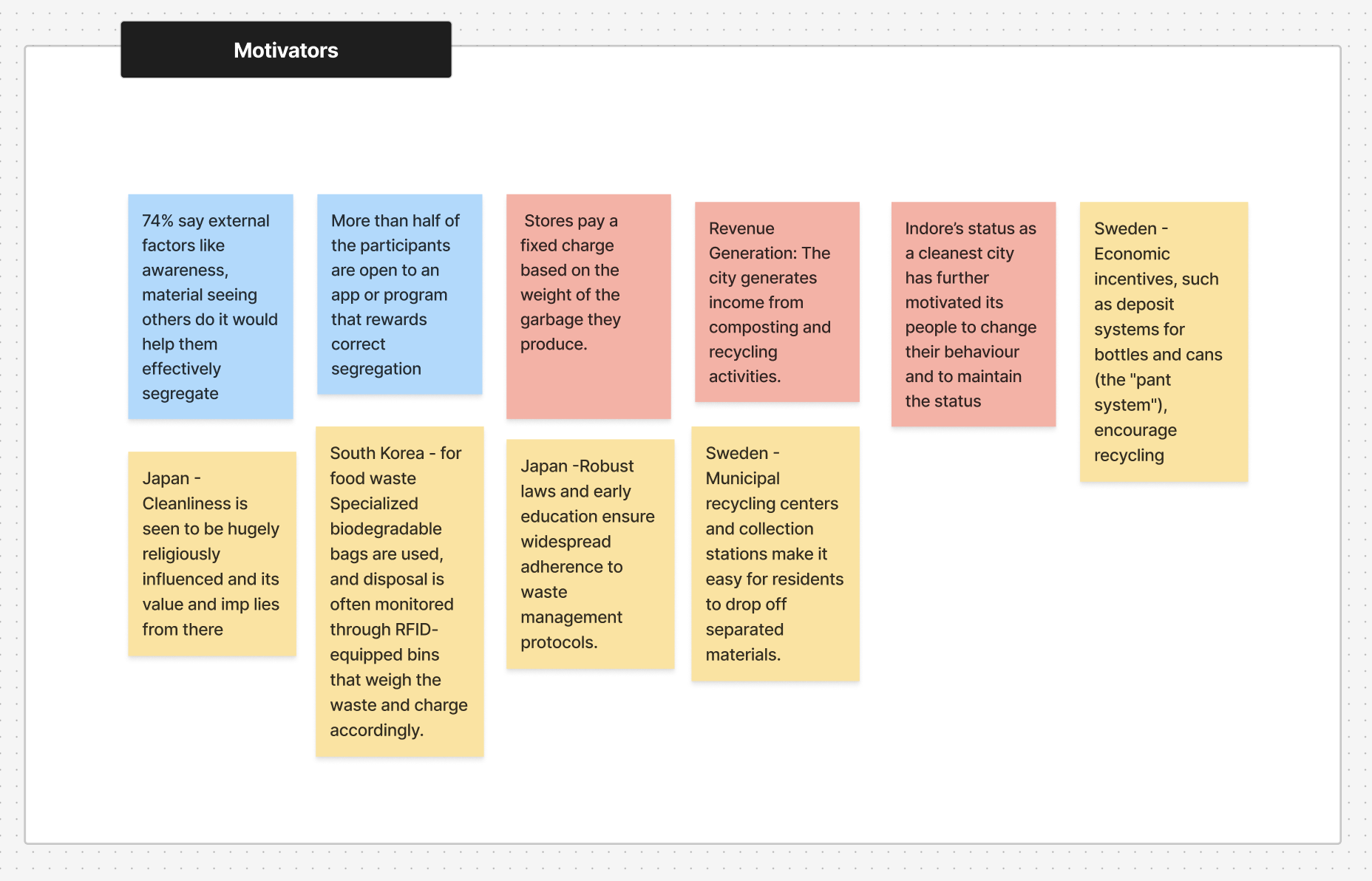
Solution Goals
- Build intrinsic motivation for consistent segregation
- Make correct segregation easier and more accessible
- Introduce community recognition and behavioral nudges
- Create feedback loops through digital and physical interventions
Design Approach
The Solution draws from the Fogg Behaviour Model which states that “Behavior happens when Motivation, Ability, and a Prompt come together at the same time. When a behavior does not occur, at least one of those three elements is missing.”

BinBuddy Solution Summary
Digital Layer – BinBuddy App

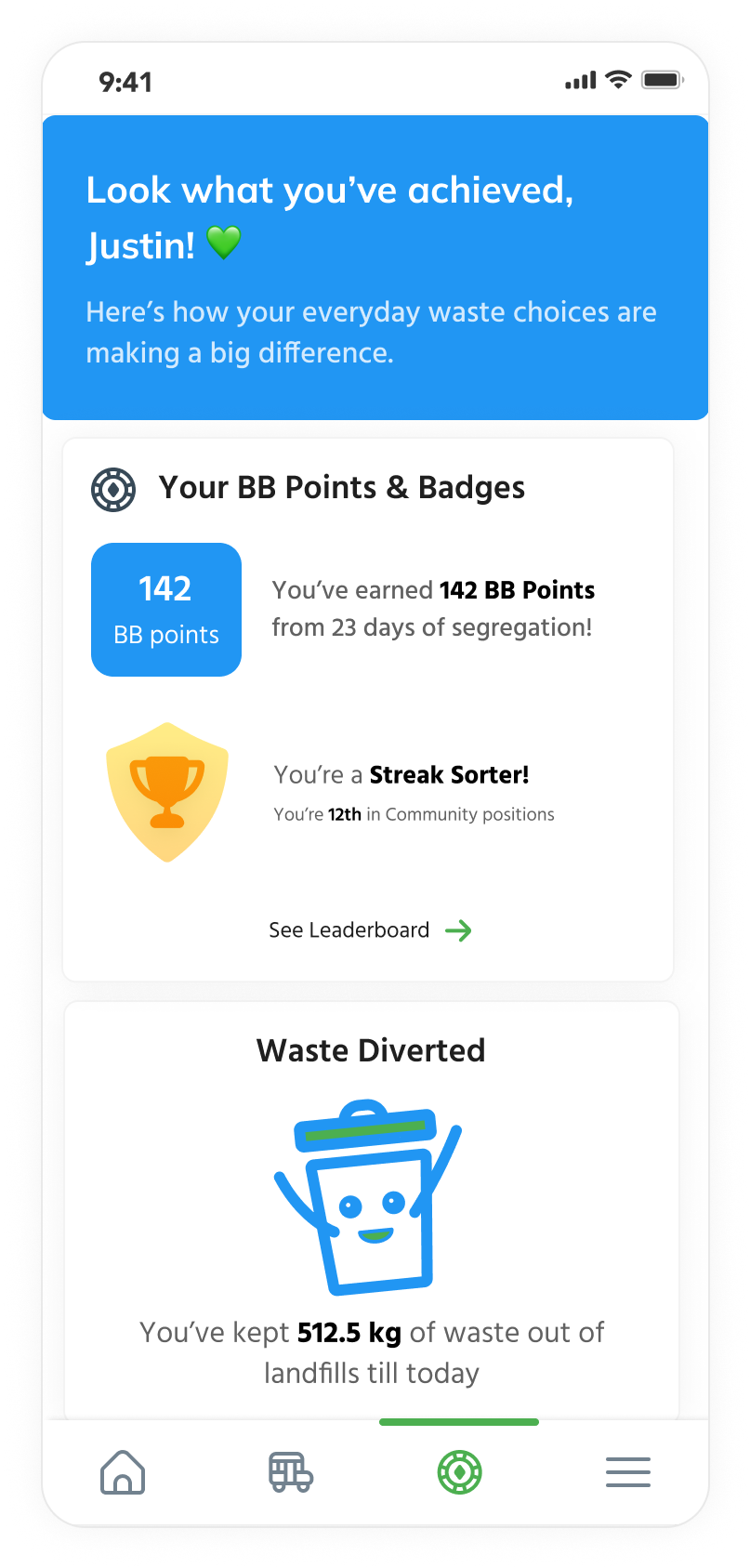
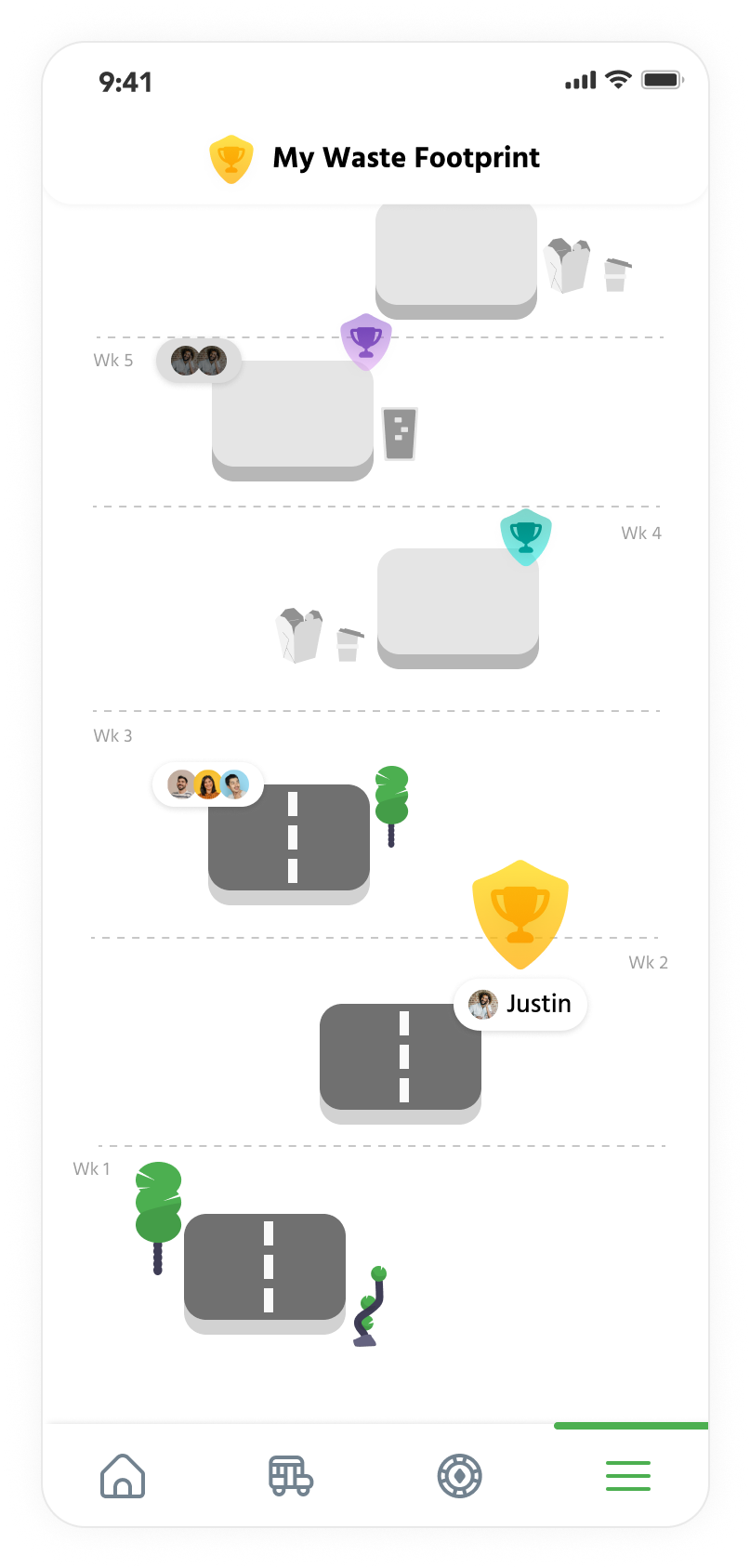
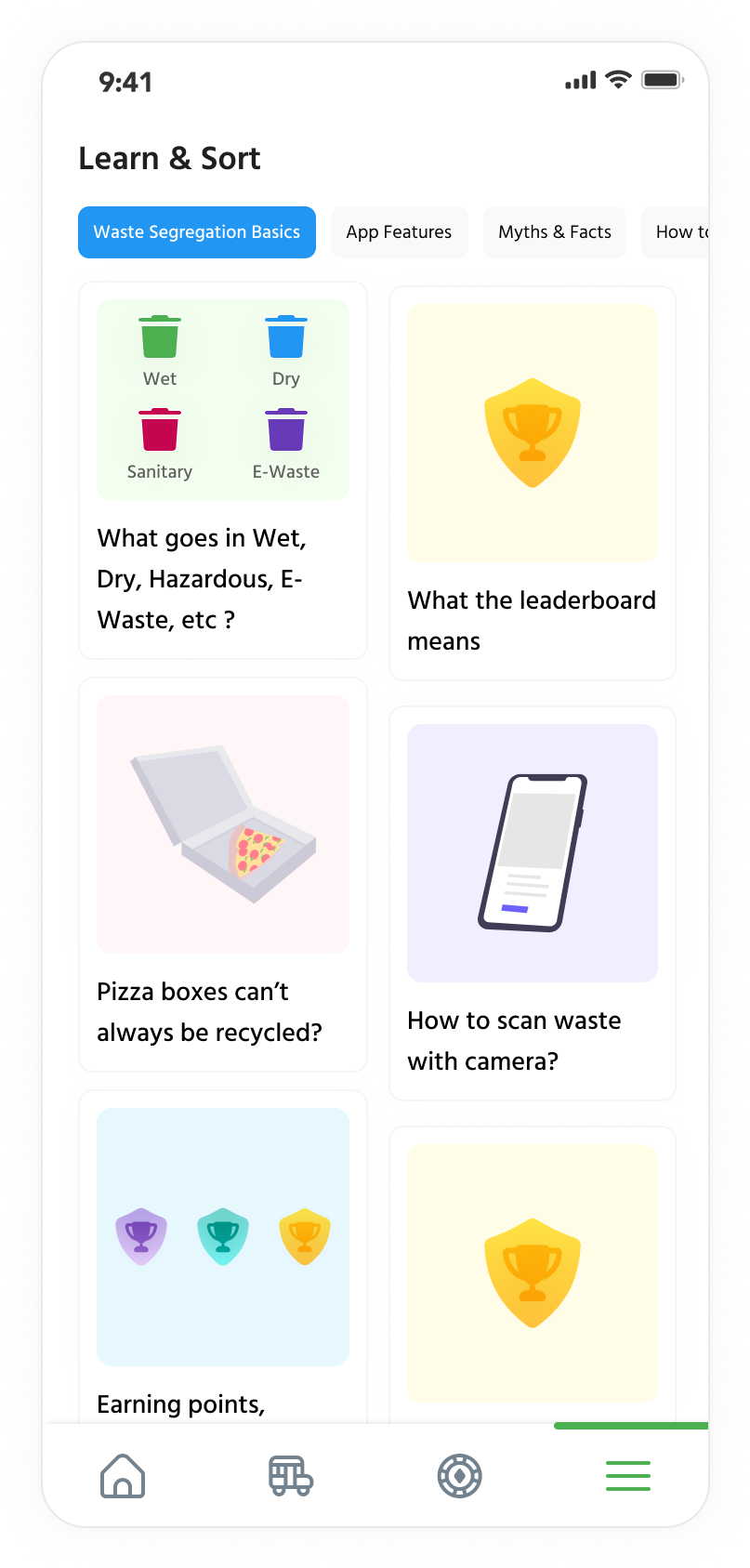
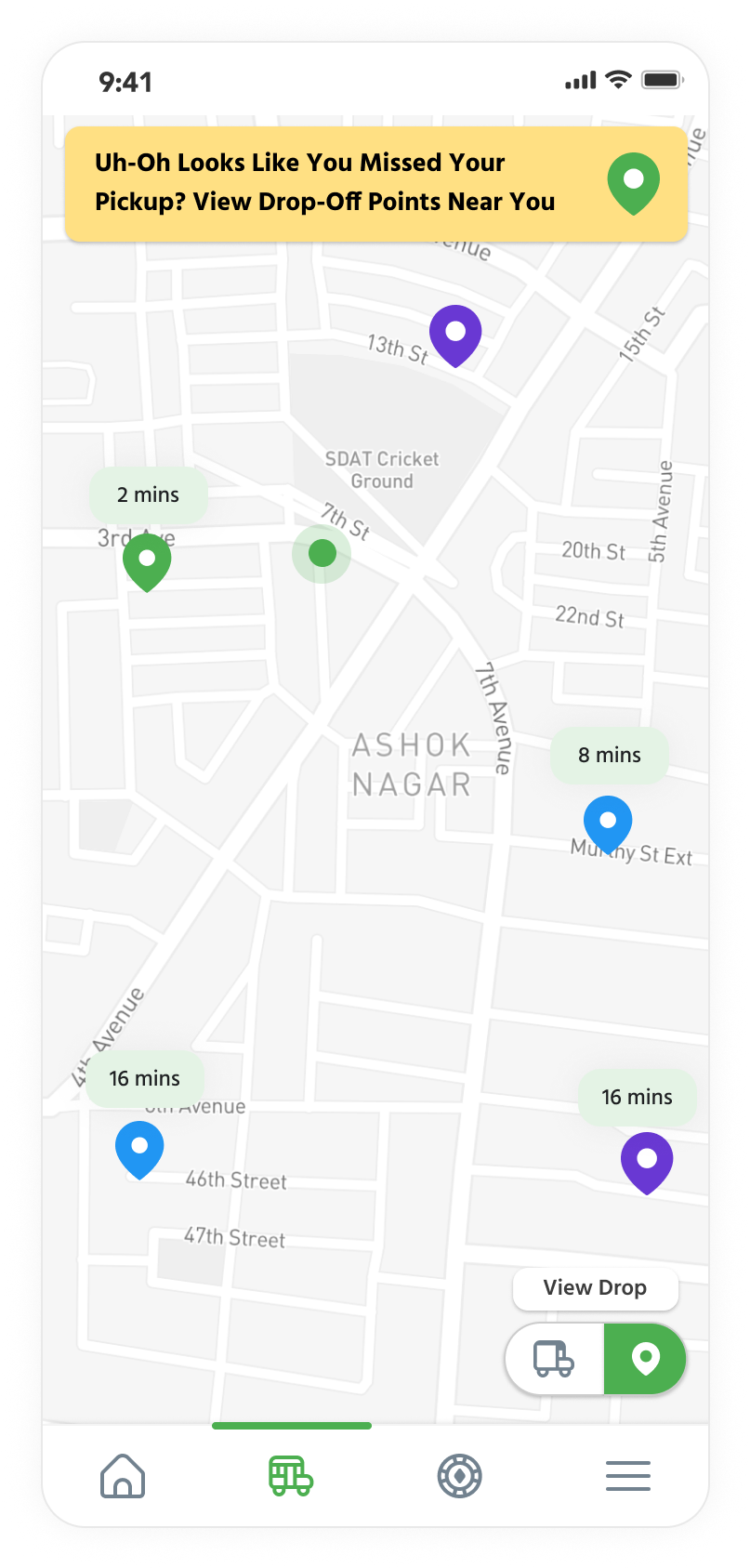

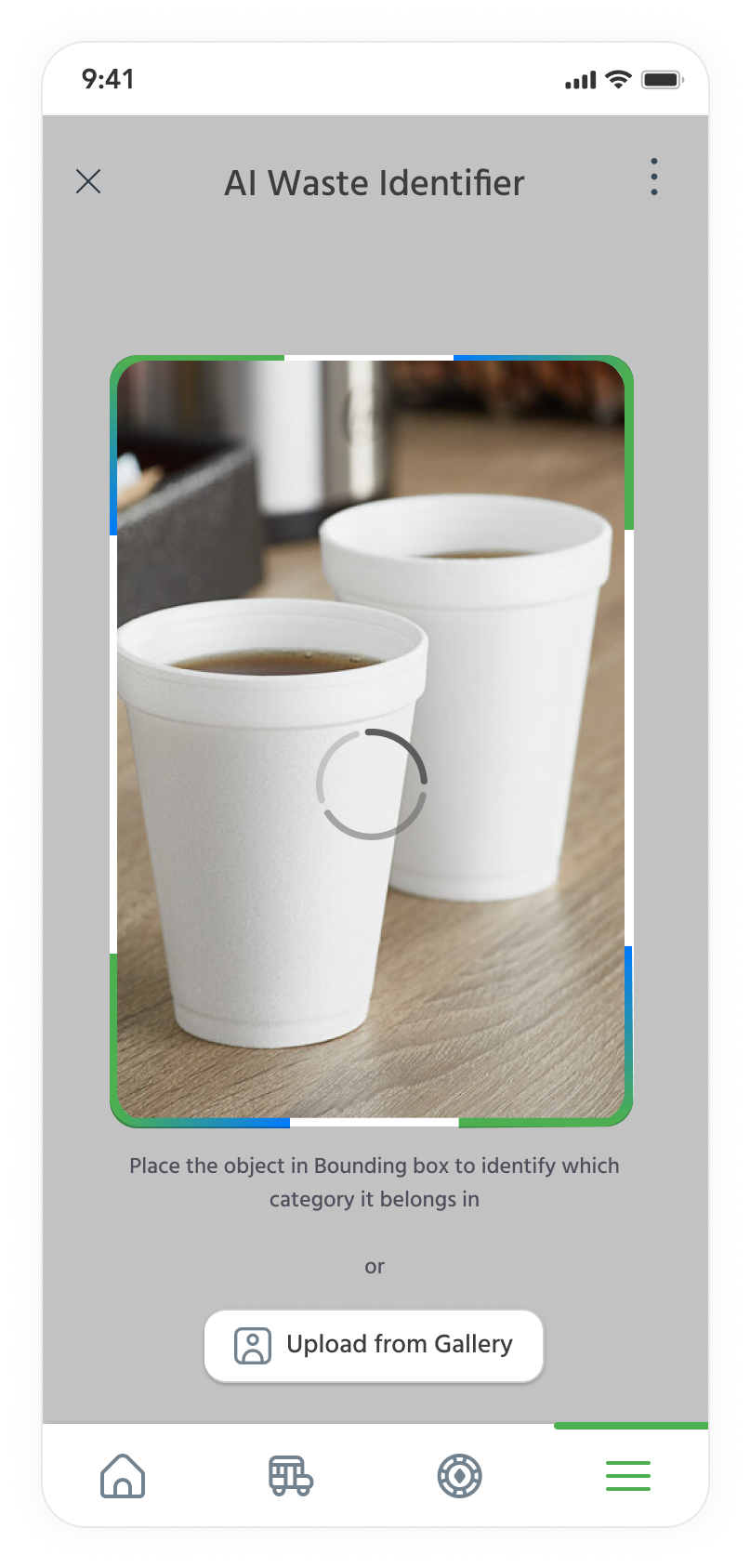
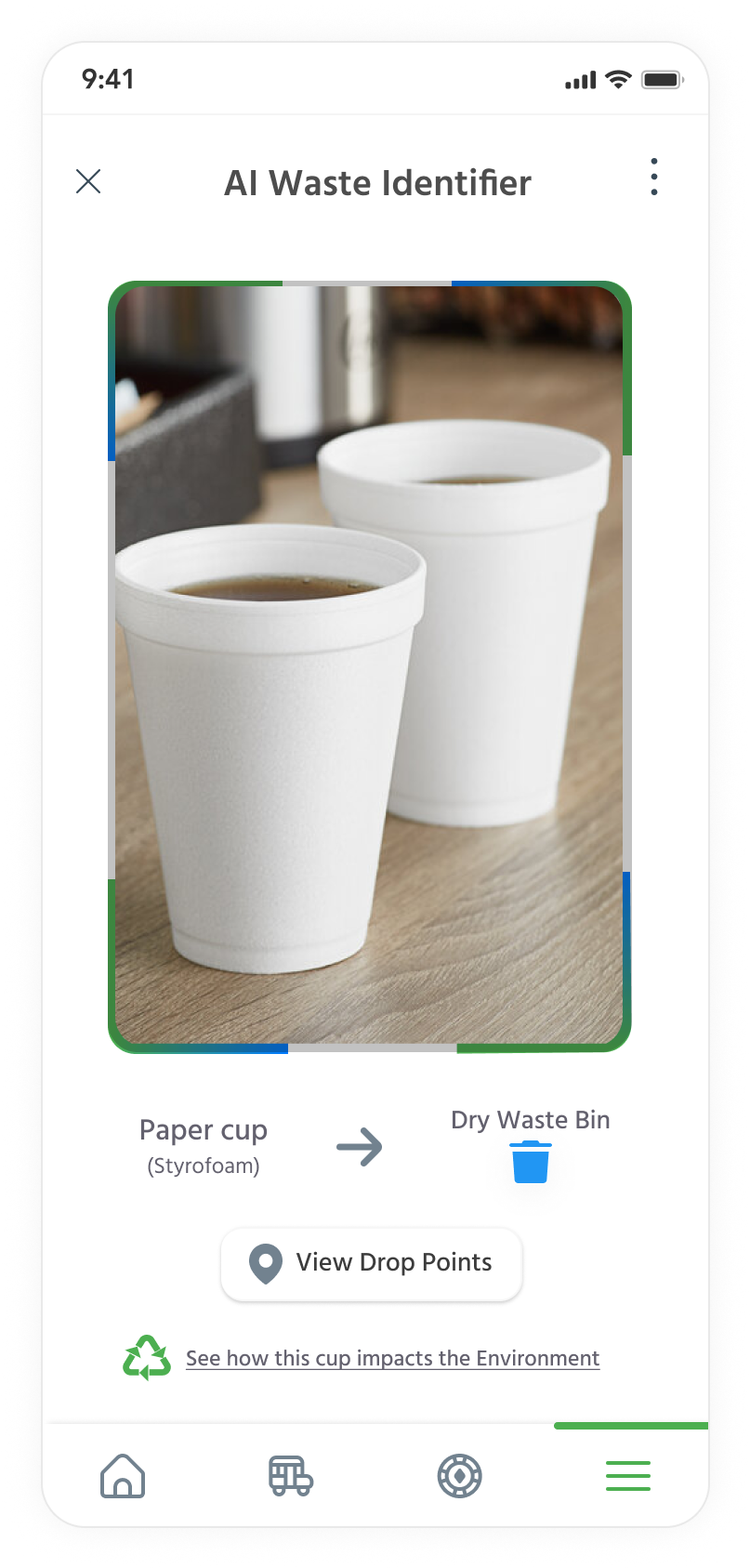
Physical Layer – On-ground Interventions
RFID Card
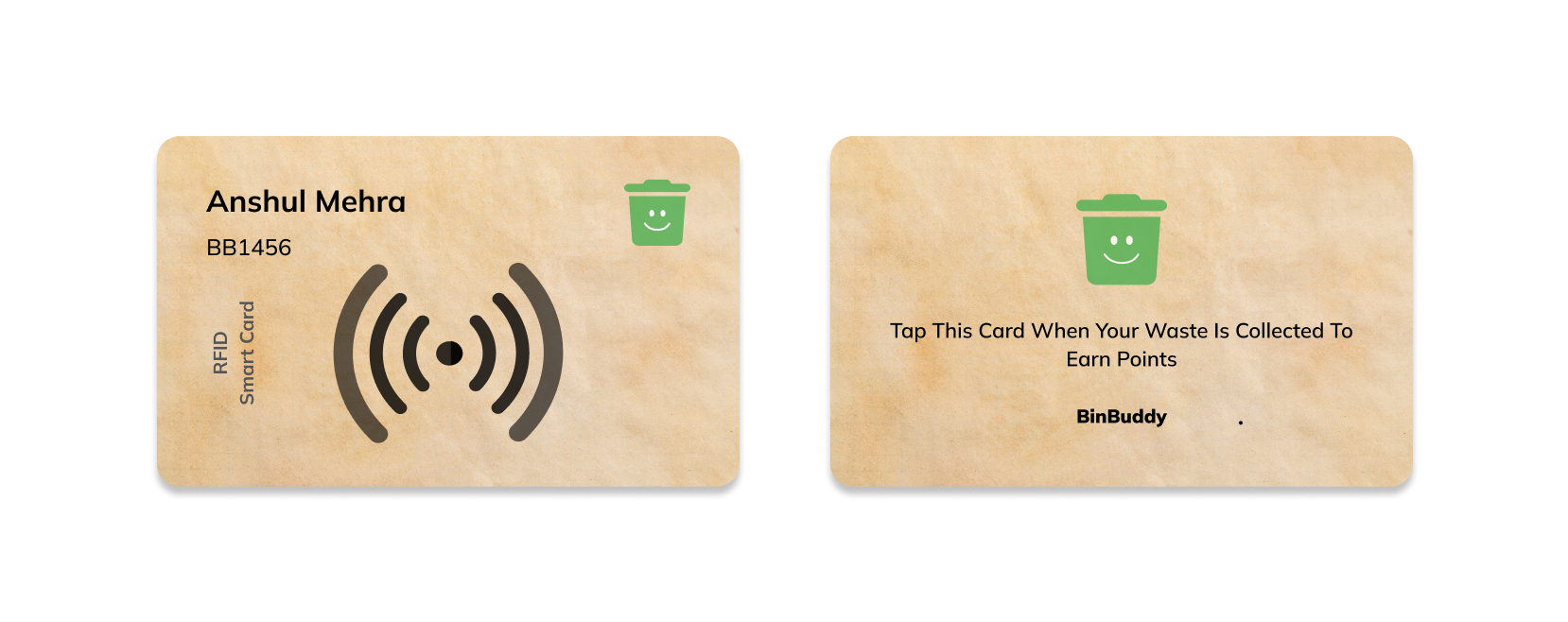
Color-coded Bins
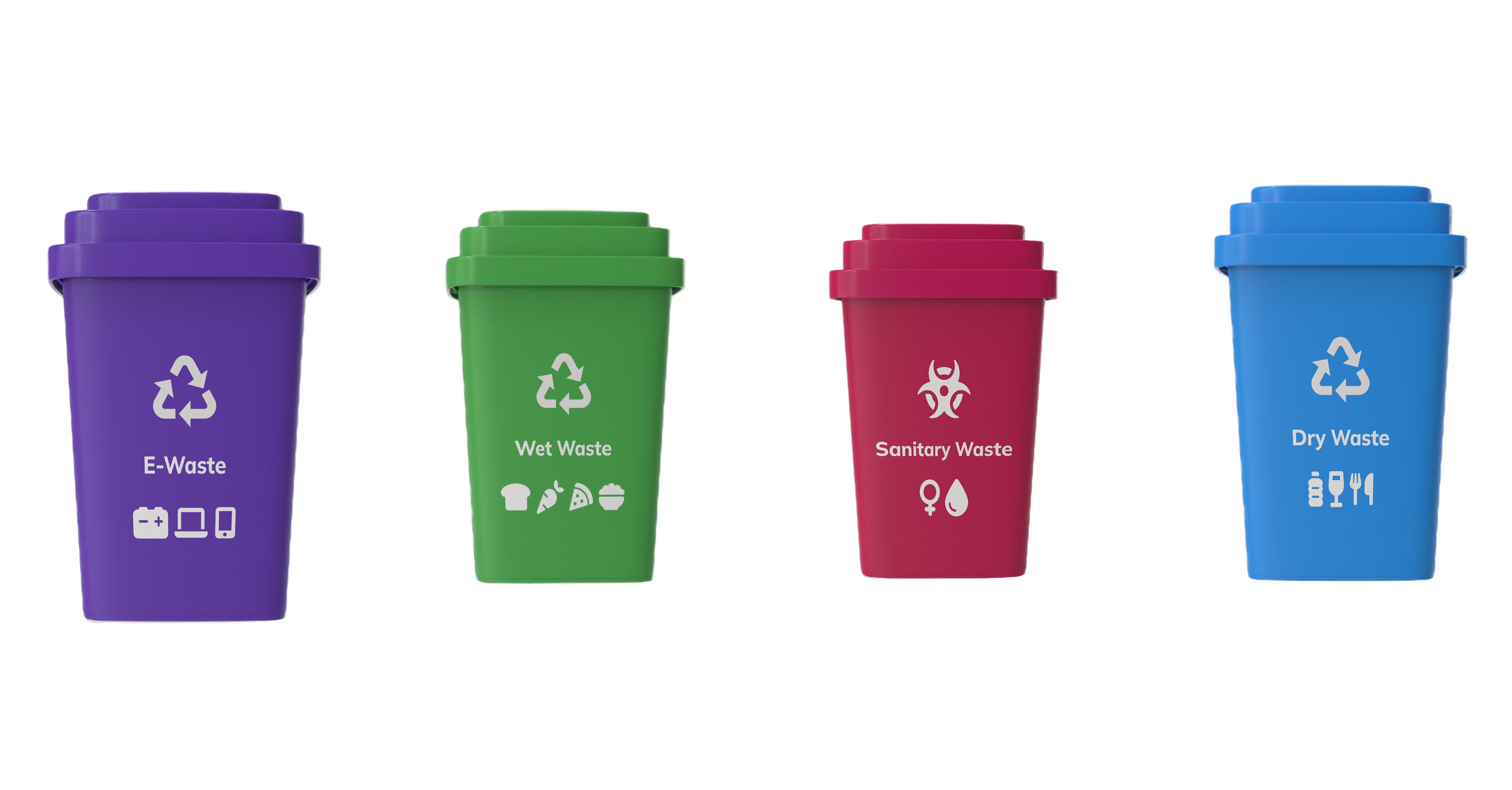
Informational Posters

Recognition Badges

Outcome
A comprehensive service + UX solution that doesn’t just enforce change it nurtures it. BinBuddy bridges awareness and action with a system designed for real people and real behavior patterns.
Takeways
- Design must respect context: smaller cities have their own behavioral rhythms
- Behavioral models like Fogg’s offer concrete grounding for habit-change systems
- Service design helps uncover non-digital levers often missed in UX-only approaches

